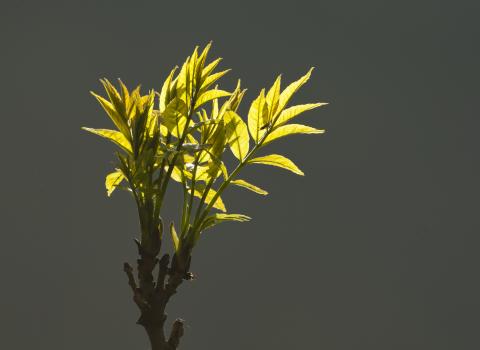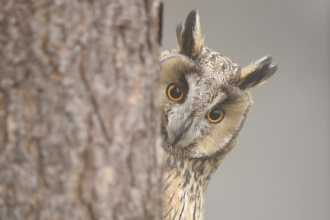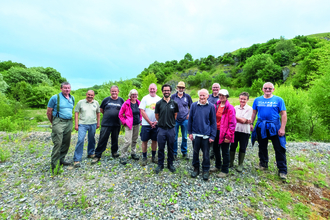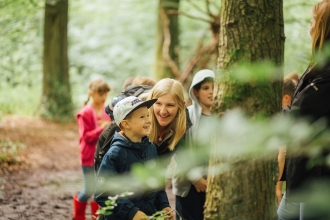Ash dieback has spread rapidly through the Welsh countryside and has now affected all of North Wales Wildlife Trust's nature reserves with ash trees present.
The Challenge
First confirmed in the UK in 2012, ash dieback, also known as 'Chalara' or Chalara ash dieback, is a disease of ash trees caused by the fungus Hymenoscyphus fraxineus.
This disease has spread quickly and is now affecting woodlands across the UK, leading to the death of thousands of trees. It has already caused widespread damage in continental Europe. Ash dieback has spread rapidly through the Welsh countryside and has now affected all of North Wales Wildlife Trust's (NWWT) nature reserves with ash trees present.
What is ash dieback?
Ash dieback is a disease that affects ash trees, caused by a fungus called Hymenoscyphus fraxineus. The fungus has two stages to its lifecycle – a sexual stage, which helps the fungus spread, and an asexual stage, which is what grows on the tree and causes damage. The fungus blocks water transport in the tree, leading to lesions in the bark, leaf loss and the dieback of the crown.
Ash dieback fungus is believed to have originated in Asia. It was first discovered in Europe in Poland in 1992, and is now found widely across the continent. The first confirmed case in the UK came in 2012, since when it has spread across England and to Scotland, Wales, Northern Ireland, and the Isle of Man.
Further information on the symptoms and signs of the disease are available here
What is the impact on NWWT nature reserves?
Ash is one of our most common tree species in Wales and we have ash on many of our nature reserves. Some of our sites on limestone (such as Ddôl Uchaf) have woodland canopies heavily dominated by ash. Many other mixed woodland sites (such as at Coed y Felin) have some substantial ash trees on them. On our grassland sites ash can often be a key component of hedgerows where individual trees can be significant landscape features.
Since 2019, the NWWT reserves team have visited all of our nature reserves to survey and monitor our ash trees and the frequency of ash dieback. We have paid particular attention where there is a potential risk to people, most notably near houses, footpaths and roads. By 2021 we were seeing a substantial increase in the number of ash trees with less than half of the canopy of a healthy tree. In other words, we have a very significant problem developing, with dead and dying trees in locations that will directly affect people’s safety and potential long-term implications for our woodland wildlife.
What next?
As part of a major woodlands project made possible with The National Lottery Heritage Fund and thanks to National Lottery players, we have been able to appoint expert woodland consultants to provide further advice and guidance on how we respond to the challenge of ash dieback in our woodlands.
In autumn 2021, we have begun the work of removing infected trees - such trees must be dealt with early as they become very dangerous to fell as the infection spreads and kills the tree. In larger woodland sites it may be possible to leave some trees as standing deadwood where safety issues are not a concern. We will also be looking for opportunities for positive management work to benefit woodland species.
In the majority of circumstances we will allow natural regeneration to replace lost trees. However we will closely monitor and evaluate the effect of the loss of ash trees and will consider supplementary planting when appropriate.
What you can do
- Respect signage and closures of paths and reserves and encourage others to do the same. They are there for your safety and based on detailed inspection.
- Check our website prior to leaving the house for any updates on closures to areas within nature reserves.
- Consider becoming a Wildlife Trust member or making a one-off donation to our work. The requirement for essential tree safety work is going to cost NWWT many thousands of pounds – which we would prefer to be using for non-destructive conservation!. Every penny helps, and we are incredibly grateful for the ongoing support we receive.
Further information about ash dieback can be found on the Forestry Research website. For queries relating to NWWT nature reserves, please contact us via info@northwaleswildlifetrust.org.uk








